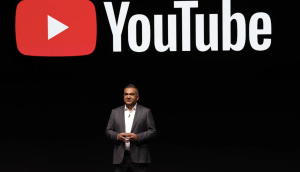The merging of brands and content, context and contact was debated by a crowd of 400 top media, agency, brand communications and marketing execs from across Canada and abroad at the second annual Media in Canada Forum in Toronto yesterday.
UK-based keynote speaker Alan Rutherford, vice president global media for Unilever Plc, kicked things off on a compelling note: ‘Our consumers are changing, and if we fail to follow them, we will fail full-stop.’ And making that change involves integrated communications planning and engagement with consumers according to Rutherford, who says the key to doing so successfully can be found in leveraging popular culture, entertainment and social networks.
He went on to define true engagement as a value exchange, and an integrated approach that lets the consumer get in whatever driver’s seat he or she wants, any time of day in any market. ‘Integration is now required not just across channels, but between content and channels,’ said Rutherford. ‘The gravitational forces pulling us back into the old way are a dangerous thing.’
Engagement must transcend the time of interrupting the consumer with a message and become collaboration in the purest way, noted Rutherford. ‘We as marketers need to develop brand communication ideas that inspire – perhaps engagement is too passive. We need to create partnerships, building relationships that foster loyalty is required. Engagement is about big ideals,’ said Rutherford, ‘adding an idea and purpose to a brand.’
His four-step path to engagement entails:
1) Put the consumer first.
2) Add value to communications – borrow equity from causes.
3) Create talkability – take advantage of WOM and social networks.
4) Do the numbers last.
The day-long Forum supplied a great deal of evidence of successfully leveraging popular culture, entertainment and social networks. Fuel Industries EVP Brady Gilchrist, during a ‘Hijacked: Brand as Content’ session, also showed how cost-effective these efforts can be. An online game touting 20th Century Fox DVD titles that allowed users to pit American Dad vs. Family Guy Kung Fu (with a blogger-buzzed guest appearance by Ryu from the popular game Street Fighter) racked up a total of 165 years of play, with 12.8 million players logging on in the first month alone. The average player stayed for 12.5 minutes and at a cost of just 6 cents per play. The campaign, said Gilchrist, relied very little on paid media, as the blogosphere pushed the character brands through round after round of dirty combat.
New York city-based Tribal DDB CEO Matt Freeman, as part of the same presentation, commented: ‘It’s a very interesting time to be in the marketing business. There’s a shift from paying for attention to earning attention,’ he says, adding that it means ‘I’ve got to compete with Kung Fu projectile vomiting.’
However, traditional mass media was also staunchly defended as an avenue for engagement. The Forum’s morning panel discussion, ‘Clearing the Path to Engagement,’ saw Kraft Canada media communications director Sandra Cifersons defend the effectiveness of TV. As Kraft Hockeyville gets ready for a second-season launch, mass media is playing a big role in the giant’s success with consumer engagement. ‘It was one of the most successful things Kraft had ever done,’ said Cifersons, referring to the overwhelming consumer participation in the ultimate hockey fan community contest and reality TV show. ‘It took on a life of its own. You just have to spend the time to figure out how you’re going to get there.’
‘Collaborate or Die’ was the theme of the endnote thoughts from NYC-based Naked Communications partner Paul Woolmington, and he imparted a key piece of advice that was at the core of Hockeyville‘s success: ‘People are your partners.’ Woolmington exhorted marketers to ‘stop thinking of consumers as mere receivers of our missives. We have to treat consumers like employees – recruit and incentivize them.’ Woolmington says content, context and contact should be approached with an open mind and no hierarchy, and that ‘wrapped up in this should be an incredibly potent brand idea.’
‘It’s damn complicated, and dangerous,’ concludes Woolmington, and it hinges on more true partnership. ‘It requires checking your ego at the door.’
In one of the day’s simpler calls to action, Geoffrey B. Roche, founder and CCO of Toronto-based Lowe Roche Advertising, pulled out a video iPod, a satellite radio and a DVR to illustrate the ease with which a viewer could avoid ads. ‘If you’re a professional, you should have one of these,’ advised Roche, who pontificated that the only thing people are going to watch live anymore is sports. ‘If you haven’t actually done it, then you don’t get it.’
And judging by audience reaction, there’s still a large swathe of the industry that hasn’t.























